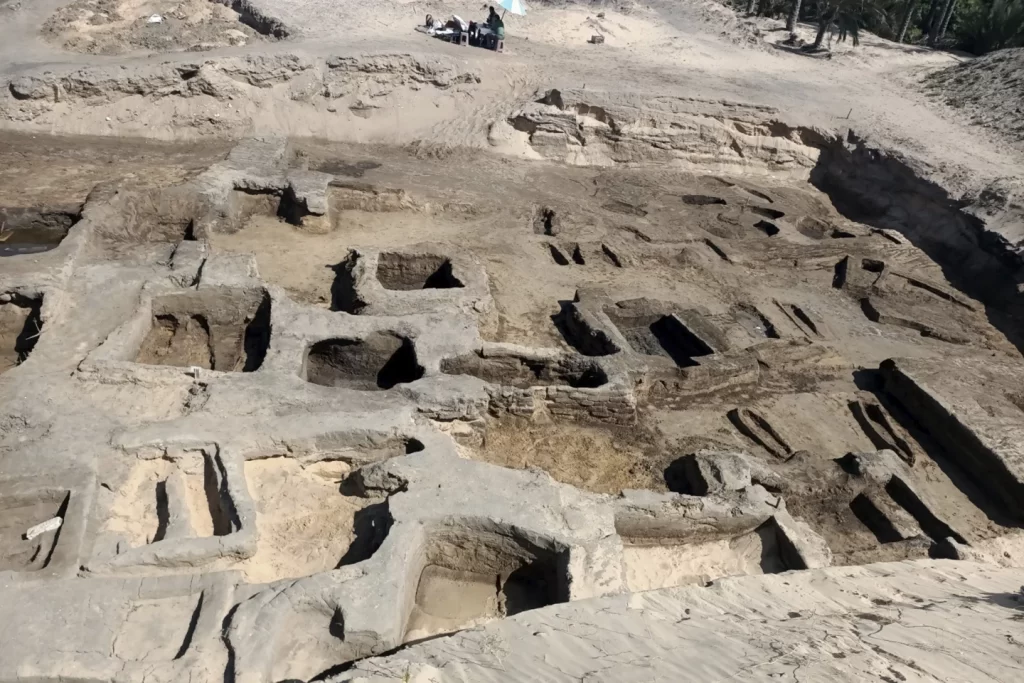A significant archaeological discovery has been made in Egypt’s Nile Delta region, where 63 tombs containing artifacts from the country’s last dynasty have been unearthed. Neveine el-Arif, spokeswoman for the Ministry of Tourism and Antiquities, announced on Monday, August 12, 2024, that experts are now working to restore and classify the finds.

The artifacts, dating back to Egypt’s Late and Ptolemaic periods, include gold pieces and jewelry.
Some of these items may be exhibited in one of the country’s museums in the future.
The discovery was made by an Egyptian archaeological mission with the Supreme Council of Antiquities at the Tell al-Deir necropolis in Damietta city, Damietta governorate.
The mud-brick tombs yielded a variety of items, including statues, funerary amulets, and a pottery vessel containing 38 bronze coins from the Ptolemaic period.
The Ptolemaic dynasty, Egypt’s last before Roman conquest, was founded in 305 B.C. following Alexander the Great’s takeover of Egypt in 332 B.C. The dynasty ended with Cleopatra’s reign.

This discovery adds to Egypt’s rich archaeological heritage. In 2018, artifacts from the Ptolemaic period were exhibited for the first time at the Egyptian Museum in Cairo, featuring around 300 items.
The find at Tell al-Deir necropolis provides valuable insights into Egypt’s final native dynasty and offers potential new exhibits for the country’s museums, further enriching the understanding of this pivotal period in ancient Egyptian history.
As restoration and classification work continues, archaeologists and historians anticipate that these artifacts will shed new light on the cultural and social aspects of Egypt’s last dynastic era.



